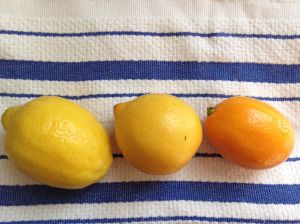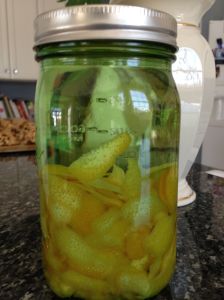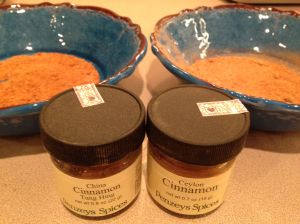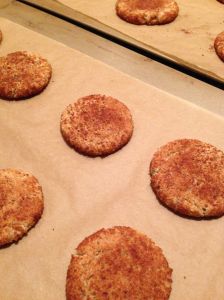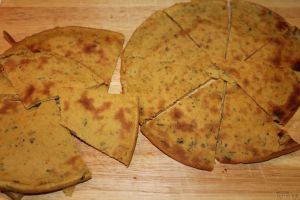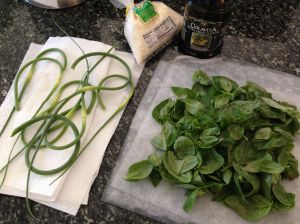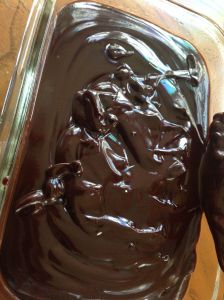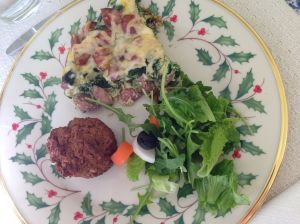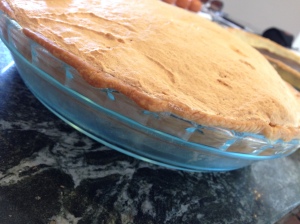 Hello and happy day to you. I hope that the weather is just as spectacular in your neck of the woods as it is for me. I thought I would take a break from being outside to share a recipe with you that I tried for the first time two weeks ago. It was MIL’s birthday and to celebrate, I thought I would try making one of her favorite desserts, lemon meringue pie. I was a bit hesitant at first because I had heard that these pies can be tricky to make, so I decided to hedge my bets by also making a chocolate cream pie. That way, if the meringue didn’t work out, I could pretend that it never happened and still have a tasty dessert to share.
Hello and happy day to you. I hope that the weather is just as spectacular in your neck of the woods as it is for me. I thought I would take a break from being outside to share a recipe with you that I tried for the first time two weeks ago. It was MIL’s birthday and to celebrate, I thought I would try making one of her favorite desserts, lemon meringue pie. I was a bit hesitant at first because I had heard that these pies can be tricky to make, so I decided to hedge my bets by also making a chocolate cream pie. That way, if the meringue didn’t work out, I could pretend that it never happened and still have a tasty dessert to share.
I started by baking the pie crust – all was well at that point. Next came the ingredients for the lemon filling. I poured the agave, cornstarch, water and egg yolks into the saucepan and stirred continuously while heating. At first, the ingredients swirled in the pan like an odd assortment of messy debris. I looked away for a moment to mention something to SensitiveHusband, and when I turned back I saw a smooth, glistening, even-colored vision of dessert. It was a fine hour for chemistry in our kitchen!
The last piece to make was the meringue topping. Into my stand mixer went the egg whites and agave. I set the mixer to high and watched the mixture slosh around for a bit. After a short time, the liquid turned into a fluffy, voluminous meringue. I stood there, amazed for a moment, and then turned off the mixer. Another score for chemistry in our kitchen!
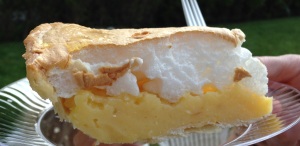 This pie is actually fun to make, especially cool if you ever enjoyed science class, and everyone who sampled it that evening really enjoyed it. Of course, we all had to also try the chocolate cream pie since no dessert should go to waste. It’s a very summery treat for the season.
This pie is actually fun to make, especially cool if you ever enjoyed science class, and everyone who sampled it that evening really enjoyed it. Of course, we all had to also try the chocolate cream pie since no dessert should go to waste. It’s a very summery treat for the season.
This recipe calls for only three eggs, which is a good thing since the price for wholesale chicken eggs increased 84.5% from May to June. This increase was the largest single-month jump since 1937, when the first records were started. Why the price increase? It’s because the Avian flu killed 49 million chickens during the past winter, according to CNN, thereby reducing the supply.
This recipe is adapted from Gluten Free & More‘s April/May 2015 issue, to remove all of the refined sugar.
Ingredients
3/4 cup light agave syrup
1/4 cup cornstarch
1 cup cold water
3 egg yolks, slightly beaten
zest of 1 (or 2) lemons
1/2 cup lemon juice
1 tablespoon butter
1 (9-inch) pie crust*, baked
3 egg whites
*If you are looking for a ready-made crust without refined sugar, Pillsbury has a refrigerated version. For a refined sugar free homemade crust, try my graham cracker version. If you are looking for a gluten free pie crust, there are many store-made products and homemade recipes available.
Preparation
Preheat oven to 350 degrees.
In a medium saucepan, combine 1/2 cup agave and cornstarch. Stir in water until smooth. Stir in egg yolks.
Stirring constantly, bring mixture to a boil over medium heat and boil one minute. Remove from heat. See the chemistry!
Stir in lemon zest, lemon juice and butter.
Spoon hot filling into baked pie crust.
In a small bowl with a hand mixer or in a stand mixer, at high speed, beat egg whites until foamy. Add remaining 1/4 cup agave and continue beating until stiff peaks form. Chemistry again!
Spread meringue evenly over hot filling, sealing to the edges of the crust.
Bake pie 15-20 minutes or until golden.
After cooled, refrigerate until served.


